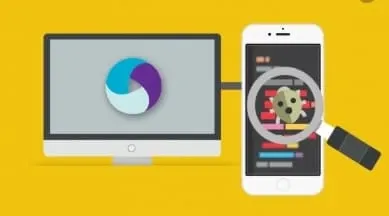



 Tech & IT
Tech & IT
 Business
Business
 Coding & Developer
Coding & Developer
 Finance & Accounting
Finance & Accounting
 Academics
Academics
 Office Applications
Office Applications
 Art & Design
Art & Design
 Marketing
Marketing
 Health & Wellness
Health & Wellness
 Sounds & Music
Sounds & Music
 Lifestyle
Lifestyle
 Photography
Photography
More Learnfly
Business Solution Become an InstructorREST API (Representational State Transfer Application Programming Interface) is a standard for designing web services. It uses HTTP methods to perform CRUD (Create, Read, Update, Delete) operations on resources, providing a scalable and stateless communication approach widely used in web and mobile application development.












Learn more topics in various categories at one place. Explore unlimited courses in other categories and up-skill yourself today.

 Jazeb Akram
Jazeb Akram 4.2 771056 Beginner Level

 John Hedengren
John Hedengren 4.1 568974 All Level

 Ranjan Pandey
Ranjan Pandey 4.1 346663 All Level

 Muhammad Ahsan Pervaiz
Muhammad Ahsan Pervaiz 4.2 101265 All Level

 Pieter Vliegenthart
Pieter Vliegenthart 4.6 100853 All Level

 Jerome P.
Jerome P. 4.8 100774 All Level

 Vikas Munjal
Vikas Munjal 4.8 100008 Beginner Level

 Senol Atac
Senol Atac 4.9 99988 All Level

 Avinash A
Avinash A 4.8 99903 All Level

 AKHIL VYDYULA
AKHIL VYDYULA36 Lectures
.jpg)
 Andrii Kuchyrenko
Andrii Kuchyrenko55 Lectures

 Mohamed Soliman
Mohamed Soliman23 Lectures

 Chirag Singh
Chirag Singh9 Lectures

 Sushma Pinapati
Sushma Pinapati51 Lectures

 Nikolay Advolodkin
Nikolay Advolodkin71 Lectures

 Arun Motoori
Arun Motoori247 Lectures

 Arun Motoori
Arun Motoori23 Lectures

 Arun Motoori
Arun Motoori89 Lectures

 Arun Motoori
Arun Motoori142 Lectures

 Arun Motoori
Arun Motoori296 Lectures

 Automation Talks
Automation Talks32 Lectures

 Syam Mohan
Syam Mohan12 Lectures
REST API (Representational State Transfer Application Programming Interface) is a set of rules and conventions for building and interacting with web services. It uses standard HTTP methods (GET, POST, PUT, DELETE) to perform operations on resources, typically exchanging data in JSON or XML format.
RESTful APIs use standard HTTP methods and are stateless, relying on representations of resources. In contrast, SOAP (Simple Object Access Protocol) is a protocol with a more rigid structure, often using XML, and may operate over various protocols, including HTTP, SMTP, and more.
The key principles include statelessness (each request from a client contains all the information needed to understand and process the request), a uniform interface (well-defined conventions for resource representation and interaction), and client-server architecture for separation of concerns.
CRUD (Create, Read, Update, Delete) operations in REST API correspond to HTTP methods: Create: POST method, Read: GET method, Update: PUT or PATCH method, Delete: DELETE method
HTTP status codes in REST API responses provide information about the success or failure of a request. Common codes include 200 OK for successful requests, 404 Not Found for resource not found, 201 Created for successful resource creation, and 400 Bad Request for invalid client requests.






